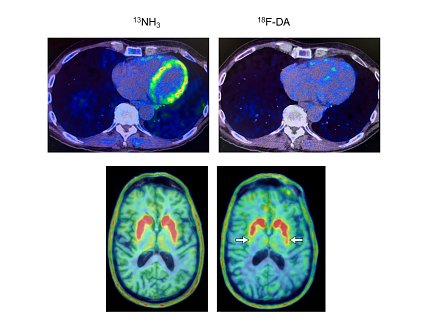PET Scans May Predict Lewy Body Dementia, Parkinson’s

Photo: GOLDSTEIN LAB/NINDS
In a small study, NIH researchers found that positron emission tomography (PET) scans of the heart may identify people who will develop Parkinson’s disease or Lewy body dementia among those at-risk for these diseases. The findings, published in the Journal of Clinical Investigation and led by NINDS scientists may advance efforts to detect the earliest changes that years later lead to Parkinson’s disease and Lewy body dementia.
In this study, researchers conducted PET scans of the heart to gain insight into levels of the neurotransmitter norepinephrine. They found the scans could distinguish individuals who would later be diagnosed with Parkinson’s or Lewy body dementia—brain diseases caused by abnormal deposits of the protein alpha-synuclein that form clumps known as Lewy bodies. The research was conducted at the Clinical Center, currently the only location for 18F-dopamine PET scanning.
In the study, 34 people at risk for Parkinson’s had cardiac 18F-dopamine PET scans every 18 months for up to 7.5 years or until they were diagnosed with the disease. Participants had three or more Parkinson’s risk factors, which included a family history of the disease; loss of sense of smell; a sleep disorder in which people act out their dreams; and symptoms of orthostatic intolerance, such as light-headedness upon standing.
Of nine individuals with low cardiac 18F-dopamine-derived radioactivity at their first scan, eight were diagnosed later with Parkinson’s or Lewy body dementia. Only 1 of 11 participants with normal initial radioactivity developed a central Lewy body disease. All nine participants who developed Lewy body disease had low radioactivity before or at the time of diagnosis.
“We think that in many cases of Parkinson’s and dementia with Lewy bodies the disease processes don’t actually begin in the brain,” said NINDS Principal Investigator Dr. David Goldstein. “The loss of norepinephrine in the heart predicts and precedes the loss of dopamine in the brain in Lewy body diseases…If you could salvage the dopamine terminals that are sick but not yet dead, then you might be able to prolong the time before the person shows symptoms.”
